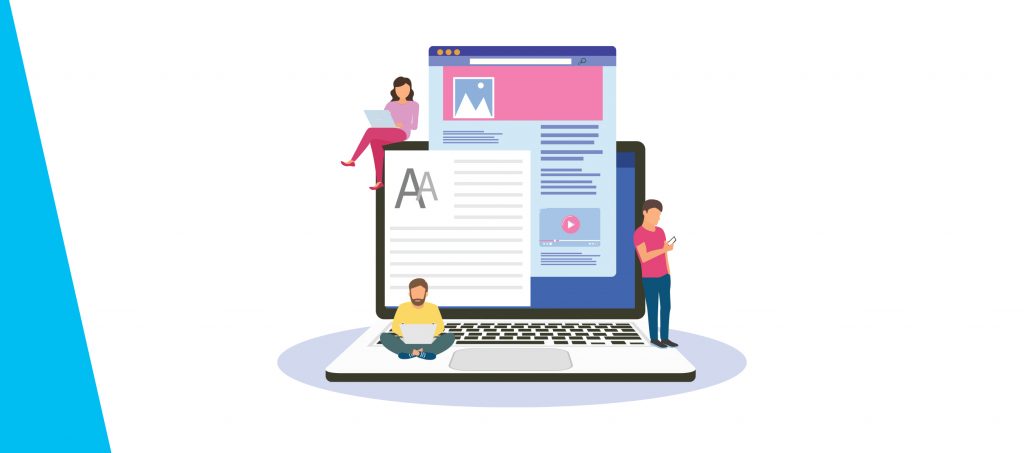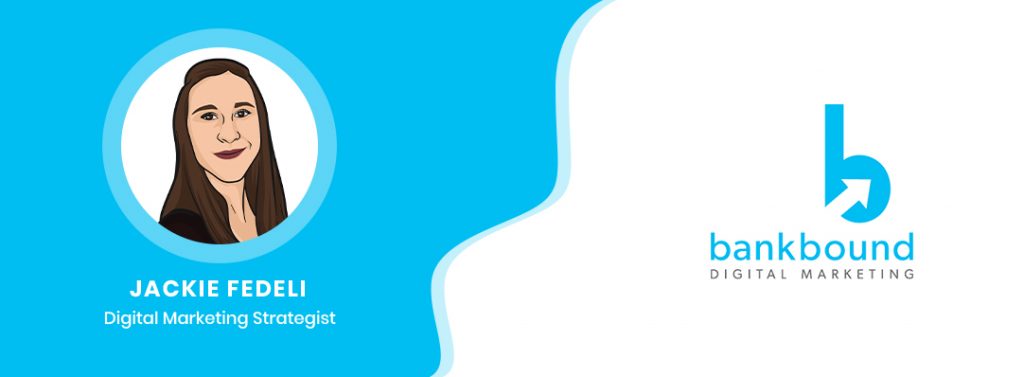Bank Marketing Strategy
In March 2004, Senate Resolution 316 designated April as Financial Literacy Month. The bill called on the federal government, schools, businesses, nonprofits, and other entities to provide the public with appropriate resources to improve financial literacy. Banks, Credit Unions, and Financial Planning agencies should be at the forefront of community initiatives.
Bank marketing can often be a difficult task. As a bank marketer, you are likely often faced with compliance hurdles and budget constraints. You may also find it difficult to reach the right audience at the right time.
Taking part in Financial Literacy Month can be an easy, effective and efficient way to market your financial institution. You should not miss out on this opportunity to increase brand awareness and provide useful resources to the community (while working on your bank’s reputation as a thought leader).
Beef Up Your Bank’s Blog

If you want your financial institution to be a resource, you will need to create content. This is where your blog comes in. Your financial institution’s blog should be a resource for your customers and prospects. Give them the tools they need to make the right financial decisions and let them know how to contact you when they are ready to make a decision.
If your blog is updated regularly, consider making this month’s post more of a general resource or a guide, rather than a specific product. Examples include, “How to Build a Budget and Start Saving” “How to Save For Your First Home” “First Time Home Buyer’s Guide”.
Creating blog content to promote this month should be step one of your Financial Literacy Month marketing plan. Your blog content will fuel your other digital marketing efforts. Original content is key to raise awareness and be seen as a thought leader.
Offer White Papers and Ultimate Guides
“How To” and “Ultimate Guide” are valuable financial marketing resources. PDFs and downloadable guides can give the visitor the sense that they are getting something extra. Provide them a more robust version of an existing guide, or curate content on a specific topic to create an “Ultimate Guide.”
Consider a “Mortgage Checklist”. This can be as simple as a list of documentation needed for an application, or a very detailed guide to help applicants through the entire process. Other suggestions for financial resource guides include Retirement Savings Guides, Digital Banking Guides, and Budgeting Tips/templates.
Offering these free resources can be a great benefit to your financial institution. Digital guides available on your website are much more cost-effective than printed guides left in your branch lobbies, and the impact can be more measurable.
Utilize email marketing automation and offer white paper in exchange for an email address. Set up a simple form on your website that requires the user to submit providing their email address in exchange for the guide. Use a strong call to action such as “Request a copy” or “Get the guide”.
The magic of marketing automation will ensure that the guide is emailed to the recipient upon completion of the form. You can build out an automation program to invite the recipient to view similar content at a later date. This person was interested enough to provide their email address, so don’t miss out on an opportunity to nurture this lead.
Be A Thought Leader On Social Media

Once you’ve created your content, the next step is to share your content. National Financial Literacy Month is as perfect a time as any to promote your financial institution’s content on social media.
Don’t miss the opportunity to be relevant while people are in financial education mode. Social media sharing is how you demonstrate that your organization is a thought leader. As a thought leader, you will need to share your own original content, as well as third-party content that is useful and helpful to your audience.
Here is what our social media feed should consist of this month:
- Your latest blog post – Your latest blog posts should always get posted to your social media accounts.
- Share another blog post that you feel is a really good resource.
- Promote your White Papers and PDFs and encourage followers to visit the site to get the content.
- Create a short list-based social media graphic with 5 to 7 points. For example X steps to improving financial wellness, X documents to have ready when applying for a mortgage, X reasons to build a budget, X steps to take before purchasing your first time. Consider a call to action directing viewers to visit your blog for more financial resources.
- Government, Nonprofit, and non-competitor resources, such as MoneyManagement.org.
- Within a month dedicated to financial literacy is Money Smart Week – During this time, libraries across the country will offer free financial educational webinars. Promote this program as a whole or specific event during the week of April 10 – 17, 2021.
- Be sure to use relevant hashtags for your financial literacy-related posts, including #financialliteracymonth and #financialwellness
> Discover additional social media best practices for banks in our comprehensive guide!
Leverage Email Marketing to Reach To Deliver Advice Directly to Inboxes

Make this month’s newsletter the “Financial Literacy Edition”. The type of content highlighted in the social media section is also the type of content you would want to include in your newsletter.
Dedicate a section to an intro paragraph about what Financial Literacy Month means to your financial institution and what you are doing to improve the financial wellness of the community. Highlight specific offers, products, or services that make your organization stand out.
If your bank does not currently engage in email marketing, now may be the time to start. Let your customers know that you recognize your responsibility to improve financial literacy, and want to share useful resources, now and on an ongoing basis. Include the same recommended content as above.
Host Online Events To Show Off Your Expertise

There is no shortage of financial education webinars taking place this month. While sharing the links to these webinars makes you a useful resource, why not take it one step further and host your own event? It can be something simple as a mortgage lender talking about the loan application process; a bank representative talking about savings and budget tips, or a financial planner talking about combining your finances with your new spouse after marriage or retirement planning and tips for investing and understanding the stock market.
Webinars with PowerPoint slides can be very beneficial. Emailing the slides to attendees after the webinar is a great email marketing touchpoint. Podcasts are increasing in popularity as well. This might be a great option if you don’t have the visual resources for a webinar.
In addition to promoting your webinar or podcast via email and your social feeds, take your social media marketing one step further. Create a Facebook or LinkedIn event and invite people to join. Here you can share information directly with Invitees. Group members can invite others to join, which will help increase your marketing reach and brand awareness.
Develop A Digital Marketing Plan
Developing a digital marketing plan for financial literacy month can be summed up in two steps: 1. Create the content and 2. Share the content. Our job as bank marketers is to come up with engaging content that benefits our audience and deliver the content via a medium that allows us to easily reach and engage with our audience. To learn more about developing a digital marketing strategy, download our Digital Marketing Strategy Guide for Local Banks, or talk with a representative from our bank marketing team.


